The Adriatic sea an endless treasure box for Archeologist and such alike especially the eastern Croatian coastline. There is an endless number of shipwrecks in the Adriatic dating from prehistory to modern times. In a few posts, I even mentioned a few like the SMS Szent Istvan near Premuda island and the US Airforce B-17 Bomber of the island of Vis. But why is it that the Adriatic is so rich in this kind of legacy. The answer is easy the Mediterranean as the name says was the center of the world before the Americas were discovered. The Croatian coastline was the safest way to northern Italy and an important trade route during the Roman period and the middle ages.
First, you need to understand that in those days you would travel for days, weeks, even months through Mediterranean waters from point A to B this leads to the second you need water and food for your journey. This is where the eastern Adriatic comes in handy, with more than 1000 island just like Greece on this route you could easily stop get water or food and continue. Furthermore, you could easily out wait for any storms or bad weather in one of the bays on one of the thousand islands.

The shipwreck I want to introduce you to lies near the island of Mljet in the south of Dalmatia. It is known as the St. Paul shipwreck it was discovered in 2006 by accident. The wreck was discovered by a diving club from Zagreb called Medveščak. Research on the wreck began in 2007 by the underwater archaeology department of the HRZ, from 2010 in association with the Dipartimento di Studi Umanistici Università Ca' Foscari Venezia. The research is financed by the Croatian Ministry of Culture and the Regione del Veneto of Italy.
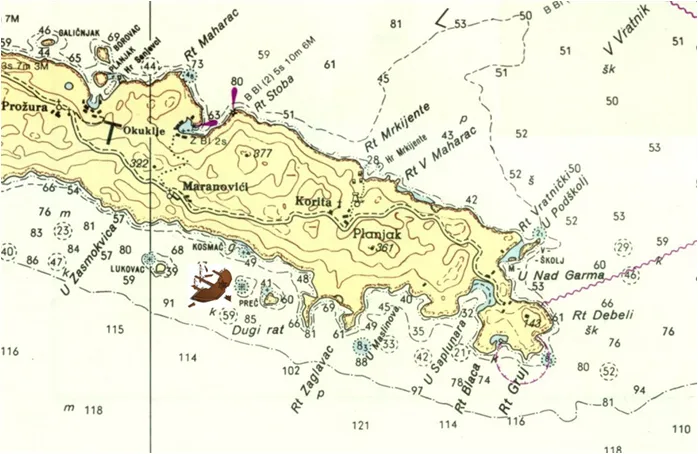
The shipwreck was discovered on the south side of Mljet island around 100 meters of the coast on the seafloor near the island Preć across from cape Dugi Rat. The wreck lies on the cascade floor at a depth from 35 to 50 meters and the remains of the ship are spread over an area of 30 square meters. A huge amount of artifacts were discovered. The research shows that it is probably a Venetian trading vessel returning from the eastern Mediterranean. The ship was caught in a storm and run aground on St. Paul shallows. From the cargo and artifacts, the ship could be dated in 16th century time period.
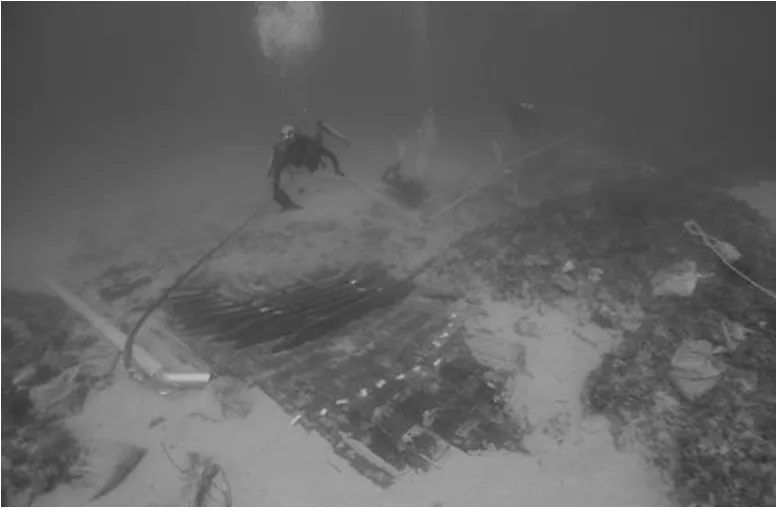
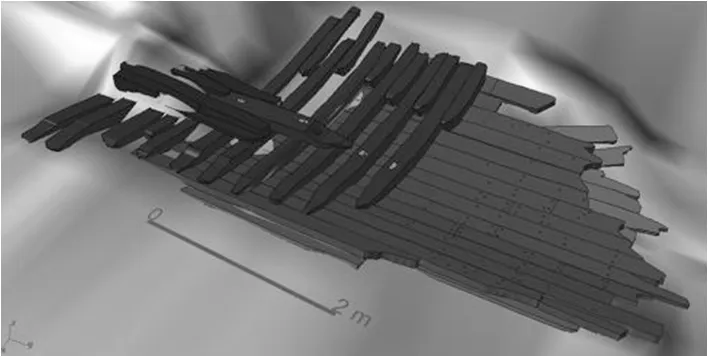
Large parts of the ships hull were discovered and the wooden remains were preserved and left underwater. Among others, a great deal of the cargo and ship equipment was discovered on sight lying on the seafloor. Like ceramic and glassware for import and the kitchenware of the ship's galley. Personal objects of the crew and the ships cash box. Every ship of that time had a cash box filled with various coins so that they could pay for port fees on their travels. A remarkable find is the ships bronze cannons and two types of ammunition made out of stone and iron.
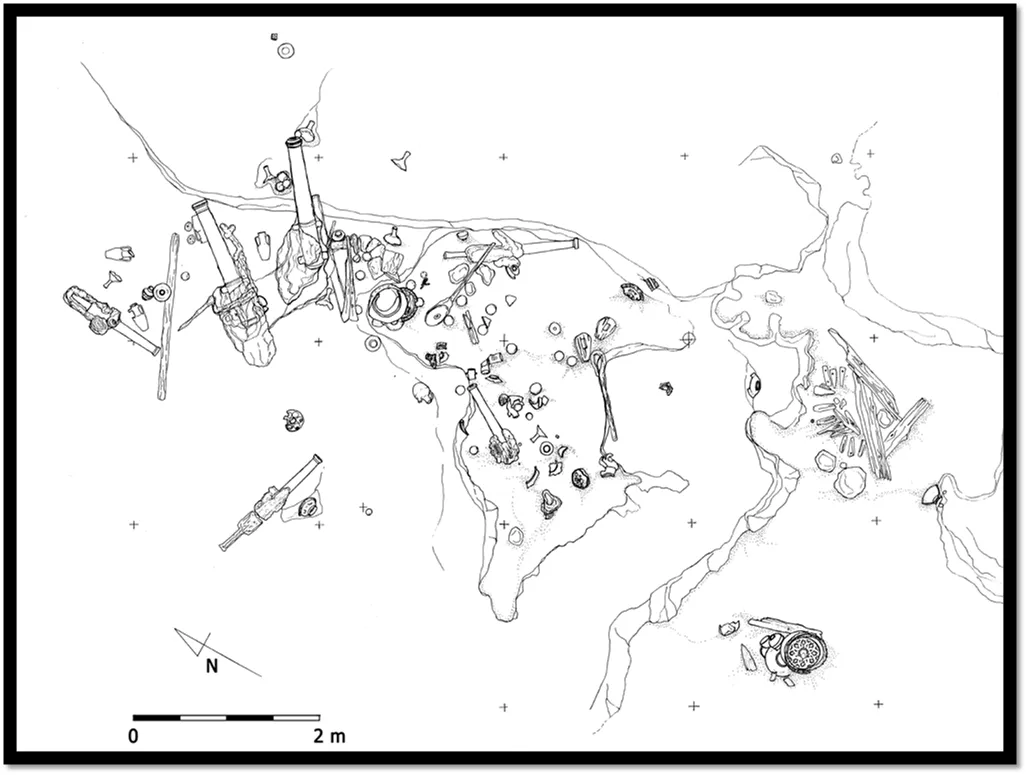
A total number of 8 bronze cannons were found on the seafloor, two different types 7even of the cannons have the loading systems from the back and one of the cannons are loaded from the front. The seven cannons with backloading system are furthermore distinct in two types. Two of the seven are known as Pedriera and the rest are known as Moschetto. The cannons are cast from an alloy of bronze and iron. All the canons with a backloading system used stone spheres as ammunition, stone spheres are more expensive and harder to produce. The one canon with front loading system is known as Esmeril and this one used iron spheres as ammunition.


Among other finds is the ships bell discovered on a depth of 43 meters during the campaign of 2010. The bell is of Venetian origin with the inscription MDLXVII which stands for 1567 probably the year the ship was launched. The bell is an important artifact and can tell a lot about the ship like the year, name, and where it was cast.
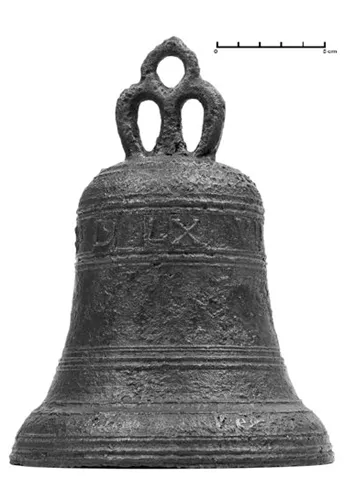
All of the photos were taken from the book Sveti Pavao Shipwreck: A 16th Century Venetian Merchantman from Mljet
And this will be all for part one in my next post about St. Paul shipwreck I will show you the rest of what was found on the seafloor.
If you have any questions please let me know in the comments below and don't forget to resteem :)
Bibliography
- Miholjek I., 2009., Novovjekovni brodolom kod pličine sv. Pavao pokraj otoka Mljeta, Jurišićev zbornik, Zagreb.
- Pešić M., Keramički materijal iz Iznika i ostalih orijentalnih radionica s lokaliteta pličina Sv. Pavao pored otoka Mljeta, Juišićev zbornik, Zagreb.
- Milošević B., Topić N., 2010., Dubrovački nalazi keramike iz Iznika, Starohrvatska prosvjeta III. sv. 37,Zagreb.
- Mihajlović I., 2009., Preliminarna analiza topova broj 2. i 6. s novovjekovnog brodoloma kod pličine Sv. Pavao pored Mljeta, Jurišićev zbornik Zagreb.
- Mihajlović I., Miholjek I., Pešić M., 2012., A 16th -Century Wreck Found near the Island of Mljet, Croatia, Between Continents Proceedings of the Twelfth Symposium on Boat and Ship Archaeology, Istanbul.
- Miholjek I., Zmaić V., 2013., Recent underwater archaeological research off the Croatian coast, SOMA 2011 Proceedings of 14th Symposium on Mediterranean Archaeology, Oxford.
- Beltrame C., Gelichi S., Miholjek I., 2014., Sveti Pavao Shipwreck: A 16th Century Venetian Merchantman from Mljet, Croatia, Oxford.
- Bezak J., 2014., Metal finds, Sveti Pavao Shipwreck: A 16th Century Venetian Merchantman from Mljet, Croatia, Oxford.